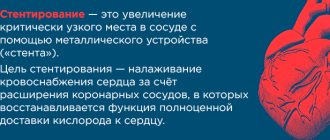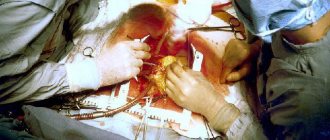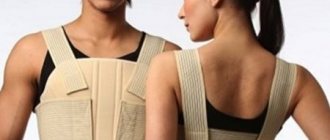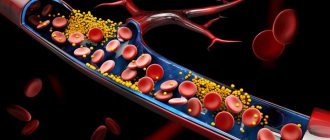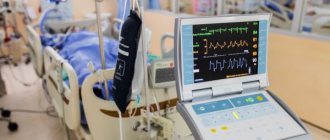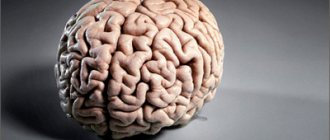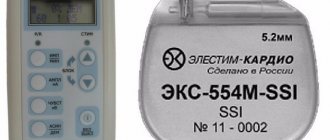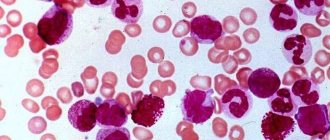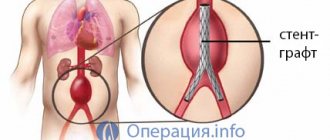Indications and contraindications for
Vascular angioplasty with or without stent installation is used for the following diseases and conditions:
- cholesterol plaques on the carotid arteries, which interfere with the blood supply to the brain;
- coronary heart disease, myocardial infarction, occurring against the background of complete blockage, spasm of the arteries of the heart, in which the blood supply is disrupted;
- stenosis of veins in the pelvic cavity, chest, abdominal cavity;
- narrowing or occlusion of the veins of the lower and upper extremities;
- arterial hypertension caused by spasm of the arteries.
Plastic surgery is indicated when reducing the diameter of any large-caliber artery, including the aorta with atherosclerotic lesions.
Restrictions on the operation:
- diseases associated with blood clotting disorders;
- renal failure;
- malignant arterial hypertension;
- acute period of infectious diseases;
- mental disorders;
- cardiovascular failure;
- pregnancy.
Angioplasty is not performed if cholesterol plaques have become calcified.
Important! The operation is possible after the elimination of these contraindications; if it is contraindicated, other treatment methods are selected.
Contraindications
Stenting of cardiac vessels - what is it: a panacea or a danger to life? In some cases, surgery is contraindicated. Doctors choose an alternative method of treating pathologies of the cardiovascular system in situations:
- allergy to iodine;
- renal, liver failure;
- respiratory dysfunction;
- pathologies of the respiratory system;
- narrowing of the artery up to 3 mm in diameter;
- several sections of the artery narrow;
- foci of inflammation of internal organs.
Poor blood clotting is a relative indication, as are inflammatory processes. Operation is possible after adjustment.
Preparation for the event
Before the operation, consultation with a cardiologist, surgeon, phlebologist and other specialists is necessary, depending on which organ’s blood supply is impaired. Laboratory and instrumental diagnostics:
- ECG;
- EchoCG;
- CT or MRI of the heart;
- angiography;
- chest x-ray;
- general, biochemical blood test;
- coagulogram;
- blood type, Rh factor;
- Analysis of urine.
Before entering the operating room, you must remove all jewelry and urinate.
Possible complications
Negative consequences are extremely rare. Basically, negative results are associated with the actions of the patient himself. If he does not comply with the regime, does not adhere to the doctor’s recommendations, the risks increase many times over.
Possible complications include:
- Thrombosis. When blood vessels are damaged, blood can thicken and clog their lumen. Thrombosis is the most common of all complications after stenting. To prevent such a scenario, doctors prescribe anticoagulants or milder drugs based on Aspirin, and other modern analogues. They are not taken for long, only while there are risks.
- Acute disruption of blood flow in the myocardium - infarction, as a consequence of thrombosis.
- Severe pain. To varying degrees, discomfort is always present. But this is a temporary disturbance.
- Dyspnea.
- Heaviness in the chest.
- General poor health. This is normal. It lasts from a day to several. Then it goes away without outside help.
Complications are unlikely, especially if the patient responsibly follows the doctor’s instructions.
Price
Surgical manipulation is carried out on a preferential, paid basis. Stenting of the coronary arteries is performed free of charge, on an emergency basis, to all patients admitted by ambulance with acute myocardial infarction or stroke. The price of an operation in a private clinic depends on its prestige and region of residence. Also, the price depends on the complexity of the work, the degree of vasoconstriction, and the number of arteries with impaired blood supply.
In Moscow, angioplasty with stent installation costs from 60,000 to 170,000 rubles (excluding the cost of the stent) - this includes food, necessary medications, the cost of doctors, and stay in the ward. The price of a stent is from 40,000 to 140,000 rubles, which depends on its type:
- metal – the simplest type of implant;
- a stent coated with medicinal substances that are dosed into the lumen of the vessel;
- self-resorbable - the most expensive type of implant. Within 90 days it releases medicinal substances, after 2 years it completely resolves.
The final cost depends on the type of implant, which is selected based on the degree of obstruction.
Important! In case of coronary heart disease with stenosis of coronary vessels, arterial plasty with stenting is performed free of charge if a pole is available, since it is included in the list of basic free manipulations.
Life expectancy after cardiac stenting and reviews of those who have undergone the operation
No doctor can accurately answer the question of how long patients live after surgery. It all depends on the nature and severity of the disease that led to the need for stenting, as well as on the condition of the myocardium after the therapy and manipulation. In addition, the postoperative period is influenced by the patient’s age and the presence of chronic pathologies.
According to statistics, average data shows almost 95% one-year survival rate, 91% three-year survival rate and almost 86% five-year survival rate. Reviews from people who have undergone this heart surgery are positive in almost 100% of cases, because it not only saved and extended their life, but also significantly improved its quality.
Medicine knows thousands of clinical examples of people who have lived decades after cardiac stenting. For successful rehabilitation and a long healthy life after it, the patient must clearly understand how to live after stenting. It is necessary to strictly follow a diet, strictly limit heavy physical activity, eliminate negative habits and be regularly examined by competent specialists.
Equipment needed for angioplasty
When performing, an X-ray unit (angiograph), a conductor, a balloon catheter, and an introducer are required. Using X-ray units, they monitor the progress of devices along the vascular bed. It includes a table, several X-ray tubes, and a screen. During the procedure, the device converts X-ray images using fluoroscopy and transmits the image to the screen.
A thin wire, which is inserted into the vessel, acts as a conductor and guides the devices through the blood flow. An introducer is a catheter that is inserted through a guide into the artery; it remains in the vessel until the end of the manipulation. A balloon or stent is advanced along it. Balloon catheter - looks like a very thin tube with a small balloon at the end, which is inflated to dilate the vessel. A stent is an implant that is inserted through a guide and left inside the artery.
conclusions
Coronary stenting eliminates the consequences of atherosclerotic lesions of the heart vessels, blockage and stenosis of the arteries. This procedure does not completely eliminate coronary disease, the main causes of which are metabolic disorders, metabolic diseases, smoking, alcohol abuse, and progressive atherosclerosis. Each patient after stenting should be aware of the need to follow the doctor’s recommendations and not violate the medication schedule. If therapy is stopped and preventive measures are not followed, the risk of sudden thrombosis and blockage of the stent in the heart artery increases several times.
A mandatory condition for monitoring the patient is a medical check-up and regular preventive examination by a cardiologist or therapist. This makes it possible to identify the slightest signs of a developing relapse and, as soon as possible, take measures to eliminate coronary stenosis, refer the patient to a cardiac surgeon and perform re-stenting.
Procedure
The manipulation is performed in an operating room or catheterization laboratory; it can be performed on an outpatient basis, without hospitalization. Sequencing:
- The patient is placed on his back on the X-ray table;
- connect devices that monitor blood pressure, pulse, and heart rhythm during the procedure;
- a catheter is installed in a vein in the arm to administer medications during and before the procedure;
- the area through which the devices will be inserted (vessel of the groin or forearm) is treated, the area around is covered with sterile linen;
- local anesthesia, vascular puncture;
- a conductor (thin wire) is inserted along which the introducer is inserted;
- a diagnostic catheter is inserted, which is advanced through the blood flow to the site of the vessel lesion. All movements are monitored on the angiograph monitor;
- after reaching the site of narrowing of the lumen, a contrast agent is injected and several photographs are taken;
- A catheter with a balloon is inserted along the guide, reaching the point of narrowing, it is inflated. Thus, the diameter of the vessel expands. The balloon is deflated and removed.
After the procedure, a series of pictures are taken to ensure that blood flow has been restored. If stenting is performed, a folded stent is passed along the guidewire and inflated so that it takes its shape. After opening, its walls crush the atherosclerotic plaque and expand the lumen. All devices are removed from the vein, the stent is left, its task is to maintain the diameter of the artery and prevent narrowing in the affected area.
Important! During the administration of a contrast agent, the patient may feel a feeling of heat, warmth, which is normal; termination of the procedure is not required.
Rehabilitation
After stenting and complete recovery, doctors strongly recommend undergoing cardiac rehabilitation, which includes:
- A program of physical exercises that improve myocardial contractile function and have a beneficial effect on the entire cardiovascular system.
- Healthy lifestyle training.
- Psychological support.
Physical exercise
Rehabilitation after stenting necessarily includes regular physical activity. Research has shown that people who exercise regularly and make other healthy lifestyle changes after a heart attack live longer and have a higher quality of life. Without regular exercise, the body slowly decreases its strength and ability to function normally.
Physical activity can be considered any activity that causes the body to burn calories. If a person makes his activity consistent and constant, it becomes a regular program.
This program should combine heart-healthy exercises (aerobic exercise), such as walking, jogging, swimming or cycling, as well as strength and stretching exercises that improve the body's endurance and flexibility.
It is best when a physical exercise program is drawn up by a physical therapy doctor or rehabilitation specialist.
Lifestyle change
Lifestyle changes after stenting are one of the most important measures to improve the prognosis of patients. It includes:
- A healthy diet helps the heart recover, reduces the risk of complications and reduces the possibility of re-formation of atherosclerotic plaques in the vessels. The diet should contain a large amount of fruits and vegetables, whole grains, fish, vegetable oils, lean meat, and low-fat dairy products. It is necessary to limit the consumption of salt and sugar, saturated and trans fats, and avoid the abuse of alcoholic beverages.
- Stop smoking. Smoking significantly increases the risk of developing coronary heart disease by depriving it of oxygen-rich blood and increasing other risk factors, including high blood pressure, cholesterol levels and physical inactivity.
- Weight management – may help lower blood pressure and improve cholesterol and blood glucose levels.
- Controlling diabetes mellitus is a very important health measure for patients with this disease. Diabetes is best controlled through diet, weight loss, physical activity, medications, and regular monitoring of blood glucose levels.
- Blood pressure control. You can normalize your blood pressure through weight loss, a low-salt diet, regular exercise, and antihypertensive medications. It helps prevent heart attack, stroke, kidney disease and heart failure.
- Blood cholesterol control.
Psychological support
The experience of stenting, as well as the disease that caused it, exposes the patient to stress. In everyday life, any person constantly faces stressful situations. Close people can help him cope with these problems - friends and relatives, who should provide psychological support. You can contact a psychologist who can professionally help a person cope with stressful events in life.
Angioplasty of cardiac vessels
A surgical intervention aimed at restoring blood flow through the coronary vessels that supply the heart muscles. Most often it is performed on people with coronary heart disease who have suffered a myocardial infarction due to atherosclerosis. When coronary arteries are blocked, stent placement improves the prognosis of coronary artery disease.
After coronary angioplasty with stenting, patients are required to be prescribed blood-thinning drugs, drugs that improve the condition of the blood and the functioning of the heart muscle. The operation is considered successful if, according to the results of angiography, the diameter of the artery remains narrowed by less than 18%. The success of the operation will also be indicated by the elimination of symptoms of cardiac ischemia.
Diagnostic measures before surgery
A doctor will never give a recommendation or prescribe surgical or other treatment to a patient until the patient has undergone a complete examination.
Before the operation, the patient learns from the surgeon all the details of the upcoming procedure, the pros and cons of surgery.
First of all, an examination is carried out to determine the nature of the blood supply to the affected vessels.
Next, diagnostics are performed to identify diseases such as diabetes, hypertension, and oncology.
The following hardware procedures are mandatory:
- coronary angiography;
- Ultrasound;
- computed tomography;
- Magnetic resonance angiography.
Angiography is prescribed for critical vascular damage. The angiography technique includes the following procedures:
- a catheter is inserted into the femoral artery to the affected area;
- X-ray contrast material enters the vessel through the catheter;
- Pictures of the arteries are taken.
Before angiography, you should not eat or drink water; allergy tests for contrast material must be performed.
All patients are diagnosed with kidney function, since the removal of contrast material from the body depends on them.
Carotid angioplasty
The operation is indicated when the diameter of the carotid artery is narrowed by 50% or more, since with a lower percentage there are usually no signs of impaired blood supply. Also, the appearance of neurological symptoms or transient ischemic attacks (precursors of stroke) is an indication for surgical treatment.
Whether a stent is necessary or not depends on the degree of narrowing and symptoms. The main danger during the operation is the high risk of developing cerebral embolism, since the carotid artery has a large diameter. The use of occlusion balloons and special filters reduces the likelihood of complications.
Disability after stenting
Carrying out stenting of the coronary arteries in itself is not a reason for assigning a disability group. But the disease for which this operation was used can lead to disability. For example:
- Group 3 disability is assigned to patients with angina pectoris or a history of myocardial infarction without the development of severe impairment of left ventricular function.
- Group 2 disability is established for patients with angina pectoris or a history of myocardial infarction, in whom heart failure limits the ability to work and move.
- Group 1 disability is assigned to patients in whom myocardial infarction or angina pectoris has led to severe heart failure, limiting the ability to self-care.
Angioplasty with stenting of vessels of the lower extremities
Obliterating atherosclerosis of the vessels of the lower extremities is an indication for angioplasty. If the veins are damaged, pain occurs when walking, mainly in the calf muscles. Due to the disruption of blood flow, a feeling of chilliness appears in the feet. As the process progresses, the pain increases and trophic ulcers form on the skin.
Ulcerative necrotic vascular lesions are an absolute indication for surgery. In this case, stenting is often combined with other operations. After plastic surgery, in 85% of patients, blood flow through the veins is completely restored. In 90%, normal blood flow is maintained for 5-6 years.
Preparatory activities
Preparing for surgery will require stopping medications such as aspirin and other medications that reduce blood clotting.
The patient must inform the doctor about all medications he is taking, about allergic reactions to anesthetics and substances used for radiography.
The cardiologist must be informed about all chronic heart diseases and those ailments that were in the anamnesis.
The doctor must be informed about the woman's pregnancy, since the examinations performed may adversely affect the development of the fetus.
When preparing for surgery, medications for hypertensive patients are not prohibited.
Eight hours before the scheduled operation, the patient is no longer given water and food.
Advantages of angioplasty, possible complications
The main advantage of the operation is that it is minimally invasive. During the procedure, no incisions are required, only puncture of one artery. Therefore, there is no need for general anesthesia. After manipulation, there is no need for a long recovery period, as after bypass surgery (open surgery). Patients go home on the day of surgery or the next day.
With angioplasty, as with any other surgical procedure, complications are possible:
- damage to the vessel when advancing the introducer;
- bleeding in the area where the artery is punctured for manipulation;
- the likelihood of contracting infectious diseases if the rules for processing devices are violated;
- exacerbation of chronic diseases;
- allergic reaction to contrast agent.
Extremely rare complications: stroke (with dilatation of the carotid artery), heart attack, sudden blockage of a vessel.
Important! In very rare cases, a contrast agent can cause renal dysfunction, including kidney failure.
Coronary angioplasty
Coronary angioplasty is one of the modern high-tech operations aimed at providing direct revascularization of the myocardium by restoring the lumen of a narrowed (stenotic) or occluded coronary vessel (vessels) of the heart. This is done mainly by ballooning or stenting the affected segment of the artery.
Coronary angioplasty is performed under local anesthesia and is inherently a low-traumatic intervention. The surgical access is a very small skin incision (about two millimeters) on the thigh or in the projection of the radial or brachial artery. In this case, unlike coronary artery bypass surgery, there is no need to open the sternum (perform a sternotomy) and connect the patient to a heart-lung machine.
All manipulations are performed through a small puncture at the site of catheter insertion, which significantly reduces the time of cardiac surgery and reduces the duration of the postoperative recovery period. The patient is usually allowed to drink fluids and eat food immediately after the procedure. For better removal of the contrast agent from the body, patients are recommended to drink about one to one and a half liters of mineral water.
Coronary angioplasty is performed under X-ray guidance using equipment similar to that used in angiographic examination of the coronary vessels. However, the tools used here are somewhat different and more complex. A catheter with a balloon at the end is carefully advanced to the site of stenosis and, upon reaching the narrowed area of the vessel, the balloon is slowly inflated, pressing the plaque into the walls of the artery and stretching them. The high-pressure canister is inflated and deflated several times, and then removed from the container.
If the diameter of the pathologically altered coronary artery is more than three millimeters and there is a need for stenting, a special metal device, like a small spring, is inserted into the vessel, which is straightened by the doctor directly at the site of narrowing. This ensures a more lasting effect, because the stent remains in the vessel forever after manipulation.
In addition, a method such as excimer laser angioplasty is currently becoming widespread. In most cases, it is prescribed together with coronary stenting and involves placing a laser catheter at the site of narrowing and using dosed radiation to clear the lumen of the coronary vessel. This allows for myocardial recanalization even in clinically severe cases.
For each of the above-described options for coronary angioplasty, a list of indications and contraindications (absolute and relative) has been developed, taking into account which, in each specific situation, the question of the feasibility and possibility of performing endovascular intervention on the coronary arteries of the heart is decided individually and the most optimal technique is selected.
(495) 506-61-01 — where is the best place to operate coronary arteries?
Rehabilitation period
The patient is under the supervision of a doctor for the first 8-12 hours to monitor his condition. On the first day, a hematoma may form in the area of the puncture of the vessel, and mild pain may be felt. Due to the administration of contrast, the frequency of urination increases, thus, it is eliminated from the body. To speed up the process, it is recommended to drink more water. Recommendations after angioplasty and stenting of coronary arteries:
- limit physical and emotional stress for a month;
- exclude hot baths, saunas, steam baths for 4-5 weeks;
- take prescribed medications;
- If bleeding occurs from the puncture site, clamp the vessel and call an ambulance.
Patients are advised to give up bad habits, undergo preventive examinations, eat a balanced diet - limit foods that increase blood cholesterol (fast foods, fatty, fried foods)
Prognosis after surgery
- Stenting of cardiac vessels is a safe operation that brings the desired effect. The likelihood of adverse effects occurring is low. Even after stenting, a person will return to his usual lifestyle and restore his ability to work.
- It should not be forgotten that the inappropriate lifestyle that caused ischemia can again cause clogging of the arteries if it is not changed. The operation is characterized by a short postoperative recovery period.
- Regarding subsequent prognosis , stenting is effective in approximately 80% of situations. It happens that the process is reversed, despite the efforts made, the artery will narrow again. But scientists continue to conduct research and improve the technology of the operation. The number of positive outcomes is growing.
- Cardiac surgeons are now using completely new stents that minimize the likelihood of reverse narrowing of the coronary arteries.
Types of stents
At the moment, there are basically two types of stents - with and without drug coating, the so-called. bare metal stents.
In our clinic, we use the entire range of stents available on the market, but we give preference to drug-eluting stents of the latest (IV) generation, which have proven to be highly effective in terms of safety and long-term results compared to bare metal stents.
There are also biodegradable scaffolds, the main feature of which is the ability to completely dissolve after the function is performed. Unfortunately, at the current stage of development of this technology, many questions remain, and clinical trial data do not indicate the unconditional superiority of biosoluble stents over drug-eluting stents. However, there are some clinical situations (young patient, small and undeveloped arterial lesion, etc.) when this technology can be successfully used.
